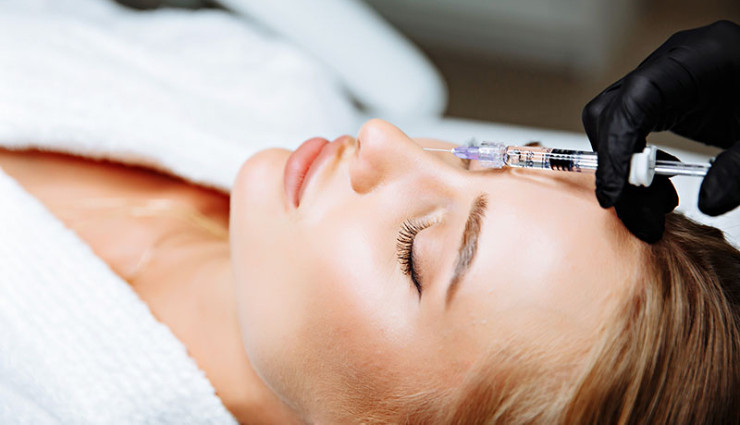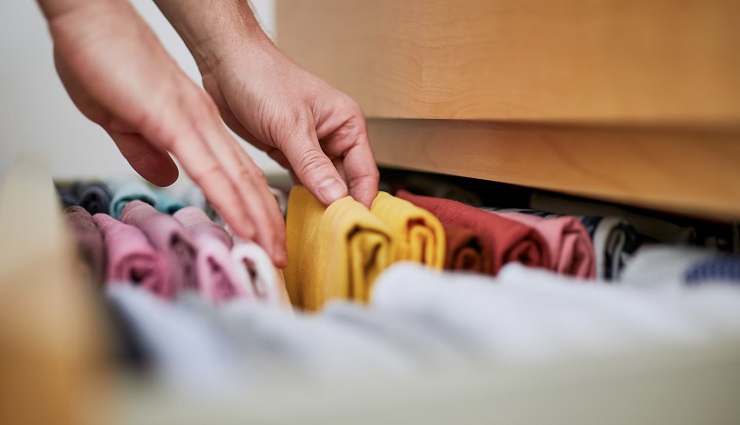Non-surgical rhinoplasty or non-surgical rhinoplasty is a cosmetic procedure. In this method, filler or dermal fillers temporarily change the nose’s shape. Liquid rhinoplasty or non-surgical rhinoplasty is used for people who do not want to undergo plastic surgery. This type of rhinoplasty is performed in one session in the office, and the result remains for about six months. Stay with us until the end of the article to get acquainted with the low-cost and temporary operation of the nose.
Comparison of traditional and new rhinoplasty
Non-surgical rhinoplasty has limitations compared to traditional rhinoplasty. For example, it does not make your nose smaller; the result lasts only six months. However, dermal fillers can temporarily smooth out bumps and correct certain features. This operation is non-invasive, without the need for cuts, stitches, and anesthesia, which is considered a safe method for most people.
Non-surgical rhinoplasty is suitable for some conditions, including:
- giving volume to the nose;
- strengthening and raising the tip of the nose;
- smoothing out bumps;
- Creating temporary changes in the nose;
- covering the protrusion of the bridge of the nose;
- Little straightening of a crooked nose.
Non-surgical rhinoplasty is a great way to make mirror changes in the nose and shows you how your nose will look with specific modifications. Of course, if you are looking for significant long-term changes, it is better to use rhinoplasty.
Details of non-surgical rhinoplasty
Before nose surgery
In a meeting, the doctor will talk to you about the goals of the cosmetic procedure. He will also ask about the change or improvement you want and take a picture of your nose to improve the treatment plan. The doctor examines your face and makes the necessary assessments. Some people are not good candidates for non-surgical rhinoplasty. After talking with you, the doctor will determine the appropriate treatment option.
Your doctor will also talk to you about other things, including:
- The result of the action;
- Types of suggested fillers;
- Benefits and possible side effects of the operation;
- action details;
- Your medical history.
How to perform non-surgical rhinoplasty
In this method, skin fillers are used to change the shape of the nose. In the past, bovine collagen and silicone were used as fillers. Still, now dermal fillers contain gel-like substances such as hyaluronic acid or calcium hydroxylapatite, which are injected under the skin to give it volume. Hyaluronic acid is a natural substance in the soft connective tissue around the eyes, cartilage, joint fluid, and skin. When an experienced doctor performs this procedure, its impressive result lasts up to 6 months. Of course, hyaluronic acid filler is reversible with hyaluronidase enzyme. Although calcium hydroxyapatite has a longer-lasting effect, hydroxy acid is more commonly used.
Procedures for non-surgical rhinoplasty
- Facial evaluation and photography: The doctor examines the nose, marks the injection areas, and takes pictures of the nose.
- Cleaning and anesthesia: After cleaning the injection area with antibacterial substances, the doctor uses local anesthesia and a cold compress to numb the skin.
- Injection: The doctor injects dermal fillers into specific areas to achieve the desired result. In some cases, the doctor also uses botulinum toxin.
- Cleansing and healing: Marked areas are cleaned, and, if necessary, cold compresses are applied to reduce swelling or discomfort.
You may feel some pressure or pinching during this procedure. The whole process takes about 20 to 45 minutes.
After nose surgery
Some people experience mild side effects such as redness or sensitivity in the treatment area. These symptoms usually last for a day or two. Other possible side effects include:
- edema;
- bruising;
- nausea ;
- Migraines (when the fillers move to other areas).
Although you may not have severe side effects after surgery, it is better to avoid such activities:
- intense exercise ;
- wearing glasses;
- touching or rubbing the nose;
- I was sleeping on my nose.
Benefits of non-surgical rhinoplasty

The most crucial benefit of non-surgical rhinoplasty is that people can achieve the desired result without plastic surgery. Of course, this method has other benefits, including:
- less than 1 hour;
- no need to rest ;
- the mildness of pain;
- quick result;
- No need for anesthesia;
- lower cost;
- reversible change;
- No need to cut or scar.
Complications of non-surgical rhinoplasty
No method is entirely safe. The nose has many blood vessels close to the eyes, so non-surgical rhinoplasty is more technical and complicated than other filling methods. For this reason, a specialist such as a plastic surgeon must perform this procedure to avoid side effects.
Non-surgical rhinoplasty may have various complications, including:
- Fever;
- Bleeding at the injection site;
- Asymmetry;
- infection at the injection site;
- the wound at the site of skin damage;
- blurred vision ;
- excessive redness and swelling;
- vascular complications;
- tissue necrosis or death;
- allergic reaction or hives ;
- Loss of vision.
In case of side effects, you should see a doctor.
In rare cases, the filler may be injected into blood vessels instead of under the skin, blocking blood flow or pressuring central blood vessels, resulting in skin tissue death and scarring.
Delayed complications of rhinoplasty
- change in skin color;
- creating scars;
- The immune reaction that usually occurs as a result of silicone injection;
- Forming a biofilm (a substance that supports the growth of microbes).
The immune response can be treated by injecting steroids or surgically removing the filler and biofilm with antibiotics.
The cost of non-surgical rhinoplasty
The cost of this method depends on various factors, including:
- Doctor’s skill and experience;
- Geographical location and place of operation;
- the required amount of filler;
- type of filler used;
- Time and precision are needed for action.
Common questions
1. Does non-surgical rhinoplasty make the nose bigger?
This method can add volume to the nose but not make it smaller. Of course, some worry that dermal fillers will make their noses look more significant than usual. But if this method is done correctly, the nose will be proportional to the other parts of the face.
2. Does non-surgical rhinoplasty narrow?
No, This procedure cannot make the nose smaller or narrower. Of course, in many cases, it can smooth the bumps on the nose and make its appearance symmetrical.
3. How long is the rest after non-surgical rhinoplasty?
This method does not require particular rest; you can continue your daily activities on the same day. Of course, the doctor may ask you to follow certain precautions to avoid side effects.
4. Is non-surgical rhinoplasty worth it?
It depends on your goal. If you want to make only a tiny change in the appearance of your nose and don’t care about its structure, this method is suitable for you. But if you want to make your nose smaller or make fundamental changes in the form of the nose, it is better to use traditional rhinoplasty.
5. How much is the pain of non-surgical rhinoplasty?
People’s pain thresholds are different. However, this procedure is not painful. The use of local anesthetics also makes the operation easier.
you say
How familiar are you with nose correction procedures? Have you ever had non-surgical rhinoplasty? If you wish, you can write us your experience and opinion in the comment section and share this article through social networks with friends considering doing this procedure.
Warning! This article is only for educational purposes; to use it, it is necessary to consult a doctor or specialist.



